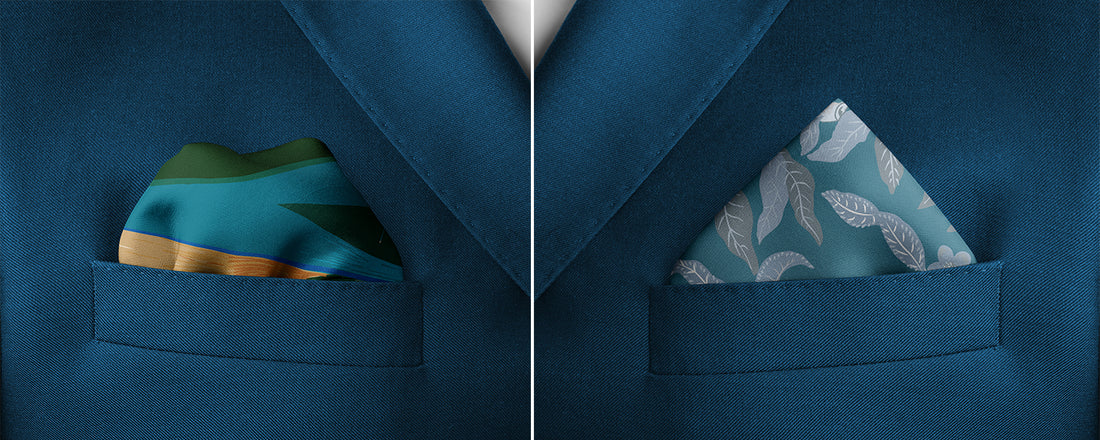The pocket square tie set stands as a small yet powerful accessory in the realm of men's fashion . It possesses the unique ability to elevate an outfit, add a touch of sophistication, and express the wearer's personality which is often overlooked but never out of style. But what exactly is a pocket square, and why should you buy pocket squares to consider adding them to your ensemble? Let's delve into the world of this classic accessory and uncover the reasons behind its enduring charm.
Pocket squares can be made from a variety of fabrics, each offering a different texture, look, and level of formality. Common fabrics for pocket squares include:
Silk: Silk pocket squares are the most traditional and often the most formal. They have a smooth and lustrous appearance, making them ideal for special occasions and formal events. Silk pocket squares come in a wide range of colours and patterns.
Cotton: Cotton pocket squares are more versatile and can be worn casually or formally. They have a more textured and matte finish compared to silk. Cotton pocket squares are comfortable and work well in both warm and cool weather.
Linen: Linen pocket squares are perfect for warm-weather events. They have a crisp, textured appearance and are breathable. Linen tends to wrinkle easily, but the wrinkles can add to the casual charm.
Microfiber: Microfiber pocket squares often mimic the look and feel of silk but at a more affordable price. They are easy to care for and can be used for various occasions.
The choice of fabric often depends on the formality of the event, the season, and personal style preferences. Each fabric brings its unique character to the pocket square, allowing you to tailor your look to the occasion.
An intriguing historical tidbit reveals how pocket squares were used as subtle tools of flirtation in the past. During the Victorian era, a period known for its strict social etiquette and reserved courtship rituals, men often employed the language of pocket squares to convey their feelings to the women they were courting.
Each fold and placement of a pocket square held a specific meaning. For instance, placing the pocket square in the right breasted pocket symbolised availability and interest, while the left breast pocket indicated that the man was already involved with someone else. If a man removed his pocket square and handed it to a woman, it was an invitation to dance, and if she placed it back in his pocket, it meant she accepted the invitation.
This non-verbal language of pocket squares allowed for discreet and nuanced communication in an era when openly expressing romantic interest was often discouraged. It's a delightful example of how fashion accessories can transcend their practical purpose and become a unique form of silent, flirtatious communication.
Why Should You Wear a Pocket Square?
1. A pocket square is like a final brushstroke on a masterpiece. It adds a layer of sophistication to your outfit, making it look well-thought-out and complete. It's an attention to detail that speaks volumes about your style sensibilities.
2. The versatility of pocket squares allows you to express your individuality. You can choose from a wide range of colours and patterns, allowing you to tailor your pocket square to the occasion and your personal taste. Whether you opt for a classic white linen square or a bold, patterned silk one, it reflects your unique style.
3. Fold a pocket square as the ideal companion to your tie and shirt. It creates a harmonious look by tying together various elements of your outfit. You can choose a pocket square that matches or contrasts with your tie and shirt, depending on the effect you wish to achieve.
4. The pocket square is remarkably versatile. It also enhances your business attire, making it ideal for meetings and presentations. On more casual occasions, a pocket square can elevate your look without appearing overdressed.
5. The presence of a pocket square adds depth to your jacket, making it look more visually appealing. This subtle dimension makes your outfit more interesting and draws the eye.
